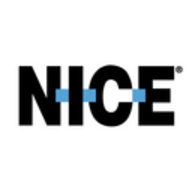

Salesforce Service Cloud and NICE CXone are leading solutions competing in the customer service management category. Salesforce Service Cloud appears to hold the upper hand in terms of integration, automation, and CRM management, while NICE CXone is distinguished by its omnichannel capabilities and real-time analytics.
Features: Salesforce Service Cloud offers advanced customization, effective automation capabilities, and seamless integration with existing CRM systems, enabling rapid deployment and comprehensive management of customer data. NICE CXone is known for its robust omnichannel integration, facilitating dynamic customer interactions across multiple platforms, supported by real-time analytics and a user-friendly scripting tool that enhances operational efficiency.
Room for Improvement: Salesforce Service Cloud could improve its user interface for more intuitive navigation and address issues with email integration and the Knowledge Management module, potentially incorporating AI-driven features. NICE CXone may need to focus on enhancing its interface to reduce lags and glitches, provide users with more control over the AWS environment, and simplify its modular pricing structure to prevent cost escalations.
Ease of Deployment and Customer Service: Salesforce Service Cloud thrives in the Public Cloud environment, providing strong user support with an extensive community network, though premium support might be required for complex issues. NICE CXone offers flexibility by operating across both Public and Private Clouds, ensuring responsive support, although certain queries may need escalation. Both platforms provide significant community-backed resources, with Salesforce having a larger, more active user community.
Pricing and ROI: Salesforce Service Cloud is considered a costly option, particularly suited to large enterprises leveraging its customization and CRM tools. Users suggest negotiating tailored pricing proposals for potential savings. NICE CXone offers a modular service model, potentially leading to cost increases as features are added. Both platforms are recognized for delivering strong ROI through enhanced operational efficiencies, with Salesforce users benefiting from substantial process improvements and NICE CXone users valuing its integration capabilities for consistent customer engagement.
NICE CXone saves time and resources due to its cloud-based nature, where infrastructure management is handled by AWS, reducing the need for me to manage it.
Salesforce Service Cloud requires significant maintenance effort to see ROI.
We have our own technical account manager which provides us with substantial visibility.
When I faced an issue with reaching a Poland DID that was ported to NICE CXone, their support team resolved the problem immediately.
If the issue is network-related or involves configuration, or maybe implementing a new tool, it might take north of 24 hours to identify the right resource to assist you.
Salesforce directly does not give you the support, and it is through the partner that you have to go, leading to some time delays.
Unless you have premium support, assistance is restricted.
I have migrated approximately 500 people to the system, and it can certainly support more users beyond this number.
Salesforce Service Cloud is the most advanced in scalability, rating around nine to ten.
Nobody can compete with Salesforce Service Cloud's scalability.
In general, the stability is good.
While the system often operates without issues, there have been instances of reports involving VM resource congestion, WFM issues, and RT problems.
We rarely encounter stability issues with Salesforce Service Cloud, although when they occur, they cause significant disruption.
Compared to challengers such as Zoom, which seem more cost-effective, NICE CXone's suite of products is very modular, so as they provide new services, you have to add to your existing package and this balloons your costs since there's an additional license needed to use the new tools, leading to potentially higher out-of-pocket expenses.
The audio quality in NICE CXone has room for improvement, as I experience issues like diffused calls and crackling audio.
Configuring Flows in Salesforce Service Cloud is very difficult.
Salesforce Service Cloud should focus on simplification.
The pricing of Salesforce Service Cloud is expensive compared to other solutions like our current SAP CRM, which is much cheaper.
The approximate licensing costs for Salesforce Service Cloud are around three hundred dollars a year per user.
Salesforce Service Cloud is expensive.
The switch from using Avaya, which required connecting to a hard or soft phone, to using WebRTC via a web browser has significantly improved customer service efficiency.
Some of the best features with NICE CXone are the real-time visibility that you have, which empowers you to make adjustments on the fly, such as turning on and off your queues and adjusting how we route calls to our agents.
Salesforce Service Cloud improved our organization with its mobile capabilities.
Clients gain productivity and save time with Salesforce Service Cloud.
Salesforce Service Cloud offers pre-built packages that are best in class.
| Product | Market Share (%) |
|---|---|
| Salesforce Service Cloud | 4.4% |
| NICE CXone | 5.8% |
| Other | 89.8% |


| Company Size | Count |
|---|---|
| Small Business | 10 |
| Midsize Enterprise | 5 |
| Large Enterprise | 3 |
| Company Size | Count |
|---|---|
| Small Business | 19 |
| Midsize Enterprise | 13 |
| Large Enterprise | 24 |
NICE CXone offers comprehensive solutions for managing customer support across channels, ensuring consistent reporting with integrated dashboards and efficient call management. The platform supports scalability and integration, catering to organizations of all sizes with diverse communication needs.
NICE CXone enhances customer support by providing dynamic content structuring and robust HTML editing. With omnichannel integration, users experience consistent reporting across platforms. The intuitive dashboards allow customizable views, improving supervision and training efficiency. Call management benefits from efficient tagging and audio playback, while tools like inView aid real-time data monitoring and flexible system customization. Challenges include occasional system slowness, dashboard freezes, and the need for a more user-friendly interface. Reporting features could be simplified for easier custom report creation, and users suggest enhancing call quality. The implementation process might pose difficulties, with a demand for additional layout options and interface enhancements. Despite these issues, NICE CXone remains a favored choice for comprehensive customer support solutions.
What are the key features of NICE CXone?NICE CXone is extensively utilized in industries focused on customer support and workforce management, especially within call centers. It optimizes quality management through call recordings and workforce efficiency by managing agent breaks and tasks. Its integration capability with Microsoft Dynamics 365 makes it a strategic tool for organizations aiming to streamline communication processes across multiple brands.
Service Cloud is fully customizable support and help desk that provide faster, smarter service that will increase loyalty, retention, and satisfaction. From call-center software to self-service portals, our service solutions enhance your customer service with more responsive, more intuitive, more flexible support that anticipates customer needs.
We monitor all Knowledge Management Software reviews to prevent fraudulent reviews and keep review quality high. We do not post reviews by company employees or direct competitors. We validate each review for authenticity via cross-reference with LinkedIn, and personal follow-up with the reviewer when necessary.